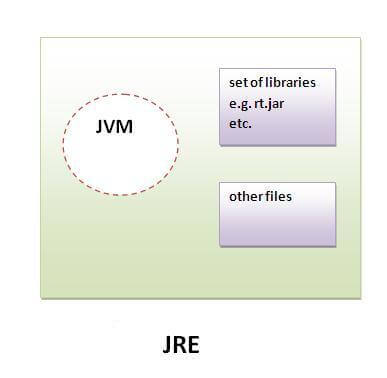JDK (Java Development Kit)
JDK contains everything that will be required to develop and run Java application. Develop Tools such as the compilers (javac.exe), Java application launcher (java.exe), Applet viewer and debuggers necessary for developing applets and applications.
JRE (Java Run time Environment)
JRE contains everything required to run Java application which has already been compiled. It doesn’t contain the code library required to develop Java application.

JVM (Java Virtual Machine)
JVM is a virtual machine which work on top of your operating system to provide a recommended environment for your compiled Java code. JVM only works with bytecode. Hence you need to compile your Java application(.java) so that it can be converted to bytecode format (also known as the .class file). Which then will be used by JVM to run application. JVM only provide the environment It needs the Java code library to run applications.
The JVM performs following operation:
- Loads code
- Verifies code
- Executes code
- Provides runtime environment
The below chart shows the different features of each of the Java technologies.

Now as per diagram you can identify what is the difference.
JRE = JVM + Required Library to run Application.
JDK = JRE + Required Library to develop Java Application.
Java Code Flow from start to Finish
1- Java Source Code (Written by Developer) (Machine Neutral)
2- Compiled Code / Byte Code (Compiled by javac) . (Machine Neutral)
3- Byte Code executed (Executed by JVM) (Machine Specific)


Comments
Post a Comment